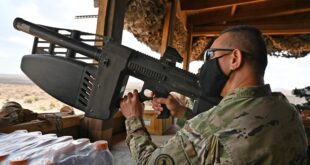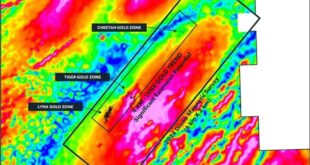The realm of aviation is rapidly transforming thanks to the collaborative efforts of NASA and uAvionix Corporation, a leading provider of innovative avionics and services for both crewed and uncrewed aircraft. uAvionix’s innovative technology and services have equipped thousands of aircraft and ground stations with Automatic Dependent Surveillance-Broadcast (ADS-B), “an advanced surveillance technology that combines an aircraft’s positioning source, aircraft avionics, and a ground infrastructure to create an accurate surveillance interface between aircraft and ATC,” says the Federal Aviation Administration. It’s also the same sort of innovation and technology application that NASA and uAvionix think is important to achieving an integrated National Airspace (NAS) where both crewed aircraft and uncrewed aircraft systems (UAS) operate safely and efficiently to achieve the next level of urban mobility. In a significant move toward advancing UAS operations, specifically for Advanced Air Mobility, the two organizations have joined forces under a Space Act Agreement to develop proven, reliable and scalable Beyond Visual Line of Sight (BVLOS) Command and Control (C2) and Detect and Avoid (DAA) technologies. With a primary focus on these capabilities for operating UAS in urban environments, this partnership will leverage the collective experience and technologies of both organizations to create safer and more efficient uncrewed flight operations.
Pushing the Envelope with Assured Command and Control Communications for BVLOS
The combined effort underscores the commitment of both organizations to fostering innovation and pushing the boundaries of what is achievable in the aviation industry. From venerable skyBeacon and tailBeacon ADS-B transceivers to the first cloud-based Command and Control service for BVLOS operations, called SkyLine, uAvionix has long been at the forefront of delivering Command, Navigation, and Surveillance technology and services that meet emerging aviation needs. The objective of the current effort is to safely harness the potential of BVLOS operations, a capability that holds tremendous promise for applications ranging from Urban Air Mobility (UAM) to long-range medical and cargo delivery. Safe BVLOS operations involve controlling uncrewed aircraft beyond the pilot’s visual line of sight and represent a crucial step toward integrating these systems seamlessly into the NAS, especially in complex urban environments. Under the Space Act Agreement, NASA and uAvionix will conduct research and development to enable the commercial use of UAS C2 systems for BVLOS. Importantly, the systems will utilize diverse communication links such as existing Internet-based infrastructure and aviation protected C-Band to create an achievable and responsive ecosystem for uncrewed flight operations. By working with uAvionix, NASA gains valuable industry knowledge and access to uAvionix’s technology that has been both proven and approved for BVLOS operations. In concert, NASA will apply rigorous flight testing at the UAS Flight Test Range situated at NASA’s Langley Research Center in Hampton, Virginia under the High Density Vertiplex (HDV) project. This real-world testing environment is essential for generating reliable flight data that will enable scientists and engineers to analyze the performance of the developed technologies in practical scenarios.
The HDV initiative foresees the critical role that reliable and scalable C2 and DAA technologies will play in unlocking the full potential of the Advanced Air Mobility (AAM) mission and that the collected flight data from real-world scenario testing will drive confidence in systems and services that combine reliable C2 and DAA functionality to provide for safe and efficient operations. By researching and developing these technologies, the effort will enable businesses to grow in the market for Advanced Air Mobility. For instance, a compelling aspect of the collaboration is that it will support the development of technologies that enable remotely piloted, commercial passenger flight operations – AKA air-taxis. These types of flight operations rely heavily on the FAA certified equipment and systems that meet strict FAA and RTCA design, development and manufacturing standards – an area in which uAvionix has significant expertise. By providing a proving-ground for advancing these technologies, the effort moves us closer to autonomous aerial transportation.
Aviation-grade Innovation and Certification
Christian Ramsey, uAvionix Managing Director for Uncrewed Aviation, aptly captures the sentiment of this partnership’s significance by highlighting its potential to advance the operational application of uAvionix’s airborne radios, ground stations and the associated cloud-based C2 and DAA services platform, Skyline. The skyLink5060 and muLTELink airborne radios, and the ground-based companion skyStation5060, work together through SkyLine to provide reliable C2 communications across diverse frequencies and paths including aviation-protected C-Band, LTE, ISM, and Satcom. Void of interference from other industries, the skyLink5060 C-Band radios play a pivotal role maintaining reliable communications which are particularly important for passenger-carrying vehicles. In concert, the C2 system is designed to work alongside FAA certified GPS and ADS-B transponders to provide safe operation of vehicles in a National Airspace with crewed and uncrewed aircraft. The high level of certification for uAvionix products and services is a cornerstone of the effort and underscores the importance of safety, reliability, and regulatory compliance.
Toward a New Horizon of Possibilities
The path ahead for NASA and uAvionix is both exciting and ambitious. The timeline for flight tests between the summers of 2023 and 2024 demonstrates the sense of urgency and need as industry seeks to stay on track with its projected ambitions for Advance Air Mobility. Collaborations like the one between NASA and uAvionix have become more common as aviation – more so than other industries requires technology, process and regulation to align for progress to occur. The partnership’s proactive approach is emblematic of the commitment needed to tackle the challenges facing the aviation industry, and the results of this collaboration are poised to extend far beyond the realm of UAS operations. With applicability to both crewed and uncrewed air traffic, and a keen eye toward the economic benefits of Advanced Air Mobility, the partnership will influence the broader landscape of aviation, transportation, and technology.
Author: Brit Wanick
uAvionix
[email protected]
Printed in the 2023 Issue of UAS Magazine
 Unmanned Aerial Vehicle The latest drone news
Unmanned Aerial Vehicle The latest drone news



